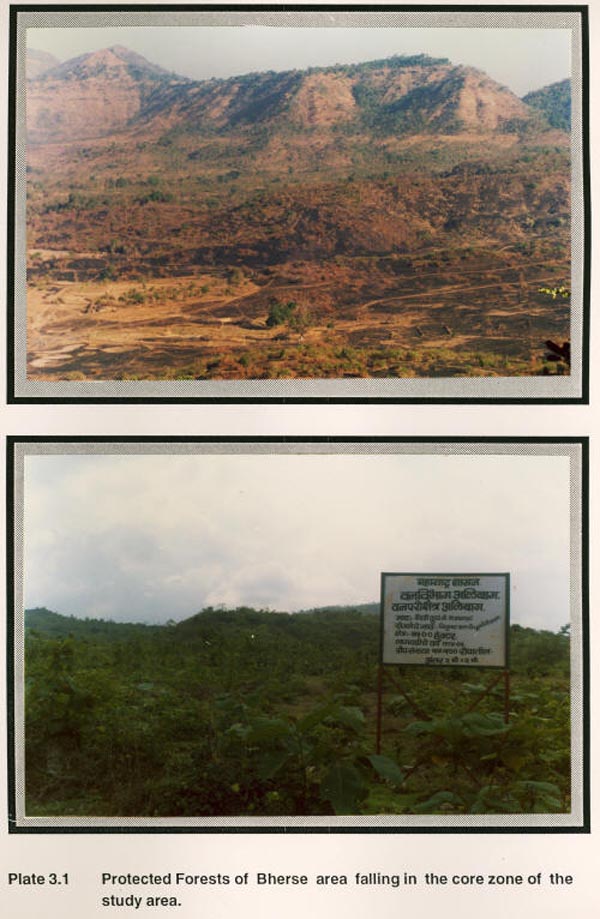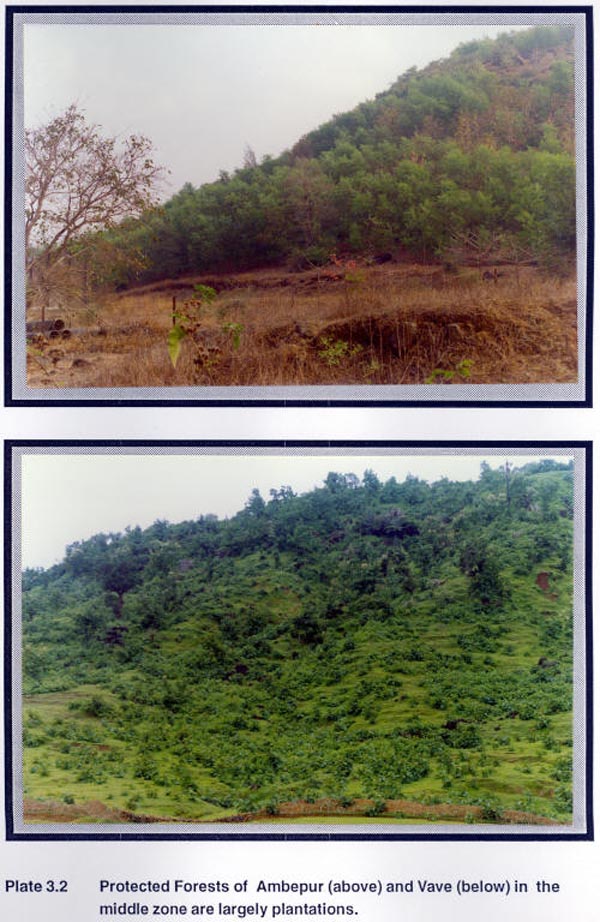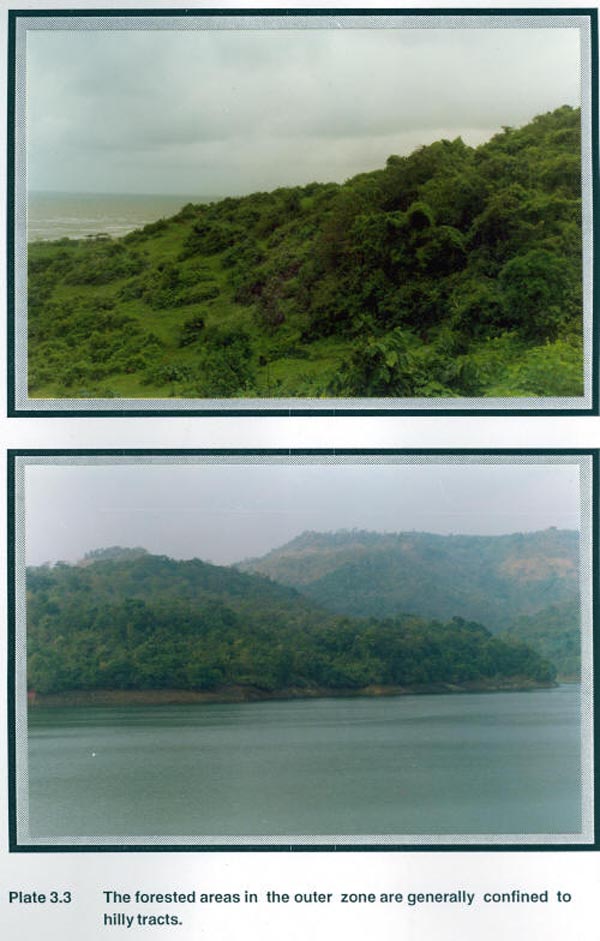The Status of Terrestrial Wildlife Habitats
|
The Table 2.2 in the preceding section provides the details of the forest types that fall in the different zones of the study area. Based on the ecological evaluation of the study area that was made using the criteria discussed earlier in section II of the report, the areas of ecological importance in the three different zones were identified for detailed evaluation (Table 3.2). Table 3.2 Areas of ecological significance in the study area.
RFs in the Karla, Sagargad, Bidwagle and Working Circles of Alibag Forest Division and PFs in Belkade, Dhavar, Garudpada, Vave, Bapale, Chaul, Chinchoti and Bagmala areas (Fig. 1.1) also in Alibag Forest Division were surveyed during the course of the study. Fifty eight species of plants were recorded from these localities (Appendix-I). A brief description of the forest types in the different zones of the study area is given below. The PF and RF of Bherse village and the forested area of Kune village fall in the (Plate 3.1). In the PF of Bherse village, the Forest Department raised a plantation of Tectona grandis, whereas in the RF a small area (572 ha.) of good natural forest still exists. The floral species recorded in this area were Bombax ceiba, Tectona grandis, Mangifera indica, Butea monosperma, Boswelia serrata, Anogeissus latifolia, etc. The shrub cover was dominated by Lantana camara and Carissa congesta. The dominant herb species in this area is Cassia tora. The forest area of Kune village is in a highly degraded from. The RF of Kune village has sparsely grown bushes of Lantana camara, Carissa congesta and Bridelia retusa. Whereas the PF region was under Tectona grandis plantation
The forest areas of Vave, Ambepur, Bapale, Chinchoti, Bagmala and Chaul fall in the middle zone. These areas have been mainly used by the Forest Department to raise plantations (Plate 3.2). The two dominant tree species that are raised in these plantations are Acacia auriculiformis and Tectona grandis. The overall ground cover in all these areas is in highly degraded form.
The PF and RF areas of Belkade of the outer zone were generally in degraded form as a result of high biotic disturbances. At present, the Sate Forest Department has planted Acaica auriculiformis in this area. Other naturally occurring species were Mangifera indica, Phoenix sylvestris and Tectona grandis. The shrub layer comprised mainly of Lantana camara and Carissa congesta. The overall ground cover was fairly low. The PFs near Dhavar and Umte villages also located in the outer zone are fairly well stocked and relatively free from biotic pressures. These are generally confined to hillocks (Plate 3.3). Acacia auriculiformis was the major species. The RF comprised of thickets of Lantana camara and Carissa congesta.
The RF area of Karle Khind (1461 ha.), represents the moist mixed deciduous forest type with dominant tree species such as Bombax ceiba, Tectona grandis, Terminalia alata and Ficus benghalensis. The shrub species recorded form this area were Carissa congesta, Lantana camara, Zizyphus mauritiana and Ixora parviflora. |
Last Updated: September 29, 2015












